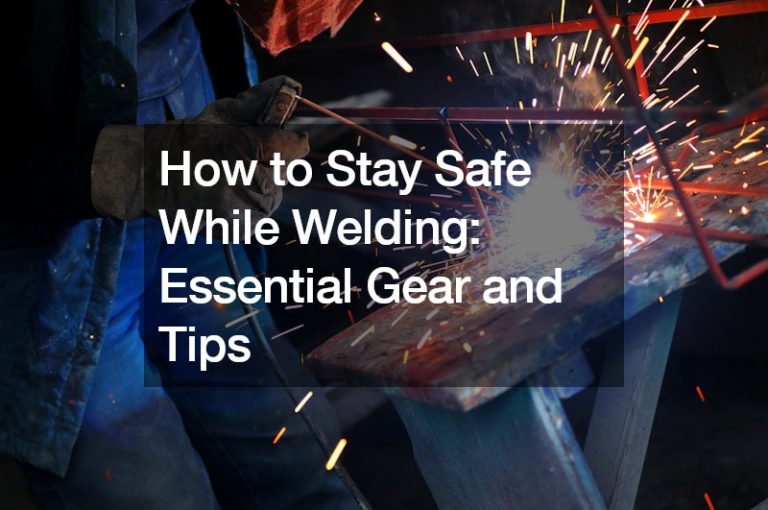Welding is a vital skill in many industries, including construction, automotive, and even the food industry. However, it’s also a task that comes with significant risks. To stay safe while welding, it’s essential to wear the right gear and follow safety tips to protect yourself from heat, sparks, and harmful radiation. Here’s a guide to the essential safety equipment you need and tips for staying safe during your welding projects.
Essential Welding Gear
1. Welding Jacket: A split leather cowhide welding jacket is a must-have. This jacket covers your arms, neck, and torso, providing a strong barrier against sparks and heat.
It’s designed to button up tightly around the neck to ensure maximum protection.
2. Heavy Pants: Opt for heavy cotton pants or blue jeans. These materials are less likely to catch fire or melt if they come into contact with sparks.
3. Steel-Toe Work Shoes: Protect your feet with steel-toe work shoes. These shoes not only shield your toes from falling objects but also offer some protection against sparks and hot metal.
4. Turtleneck Shirt: Wearing a turtleneck shirt under your welding jacket can provide additional protection for your neck from the rays of the arc welder and flying sparks.
5. Welding Hat: A welding hat, worn backwards, protects your ears and hair. The hat often includes a flap at the back to prevent sparks from getting down your collar.
6. Gloves: Gloves are arguably the most crucial piece of safety gear. Welding gloves are heat-resistant, but not flame-proof, so never put your hands directly into the flame. Make sure your gloves fit well and are free of holes or cracks. Replace them regularly as they can become stiff from heat and oil exposure, making it difficult to operate machinery.
7. Safety Goggles: For oxygen acetylene welding or cutting, use safety goggles that are tinted to protect your eyes from bright light and have a safety lens to prevent splatter from damaging your eyes.
8. Arc Welding Hood: An arc welding hood is essential for arc welding. It protects your eyes and skin from high-frequency ultraviolet radiation. Remember, safety glasses used for oxygen acetylene welding will not protect against UV radiation from arc welding.
9. Foot Protection: When doing a lot of cutting, additional foot protection can be helpful. These guards fit over your legs and come in different styles to suit your needs.
Safety Tips
1. Be Aware of Heat: Welding generates extreme heat. Oxy-acetylene cutting can reach temperatures over 6,000 degrees Fahrenheit, and arc welding can exceed 10,000 degrees Fahrenheit. Always wear gloves and assume that everything in the shop could be too hot to touch.
2. Keep Your Workspace Clean: Ensure your welding area is free of flammable materials. Sparks can fly several feet from the welding area, so keeping the space clean can prevent accidental fires.
3. Check Your Gear Regularly: Inspect your safety gear before each use. Look for holes, cracks, or any signs of wear and tear. Properly maintained equipment is crucial for your safety.
4. Proper Ventilation: Welding fumes can be hazardous. Make sure your workspace is well-ventilated to avoid inhaling harmful fumes.
Welding in the Food Industry
Welding in food industry plays a critical role in constructing and maintaining equipment. This type of welding requires meticulous cleanliness and precision to ensure that welds do not contaminate food products. When welding in the food industry, following safety protocols and using the appropriate gear is even more critical to maintain both personal safety and food safety standards.
By wearing the right protective gear and following these safety tips, you can significantly reduce the risks associated with welding. Whether you’re working on a small project at home or a large-scale industrial job, prioritizing safety ensures a successful and accident-free welding experience.
.


